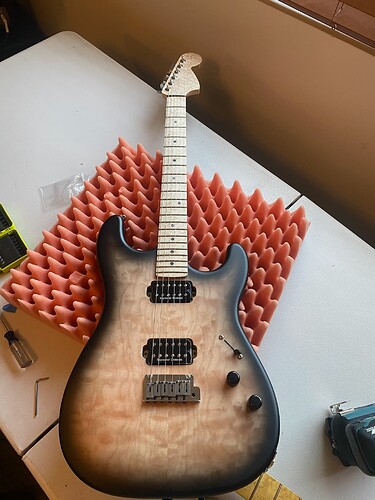Just a general FYI I have not seen any footage of Shawn doing continuous DSX alternate picking. I think the form you’re referring to is actually USX, just done with dart-thrower wrist motion, as opposed to reverse-dart. It’s not as common as using a pinky-side anchor, there are examples of it, like our very own Bill Hall!
The form looks like it would be DSX because of the thumb anchor, but it’s actually USX where upstrokes escape. I think Phil X’s USX technique is similar. There are probably others, Guthrie maybe? I haven’t looked at him in a while but I know I thought that previously. Shawn is maybe the most famous “fast” USX dart-thrower player with a flat form or thumb anchor that I can think of off the top of my head.







